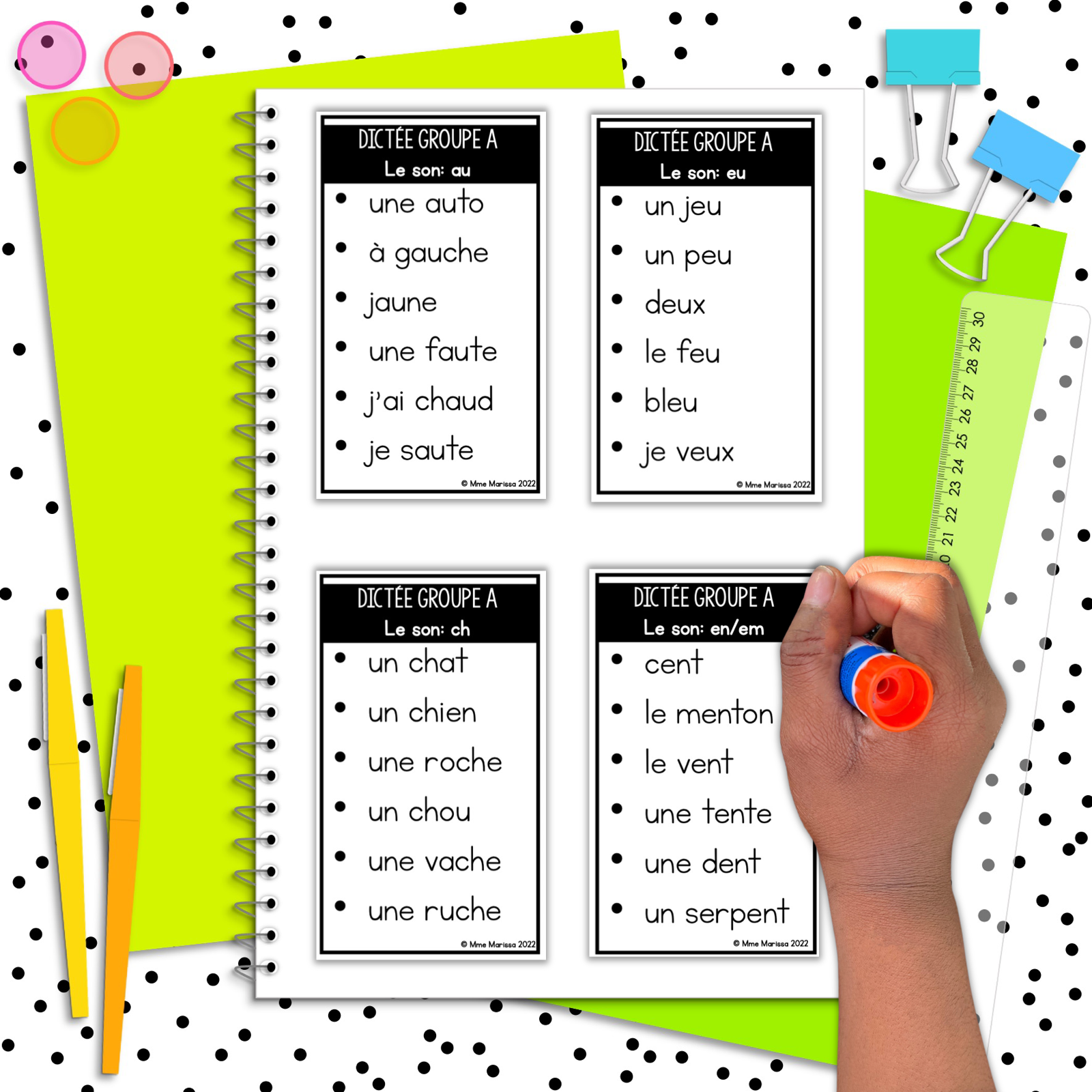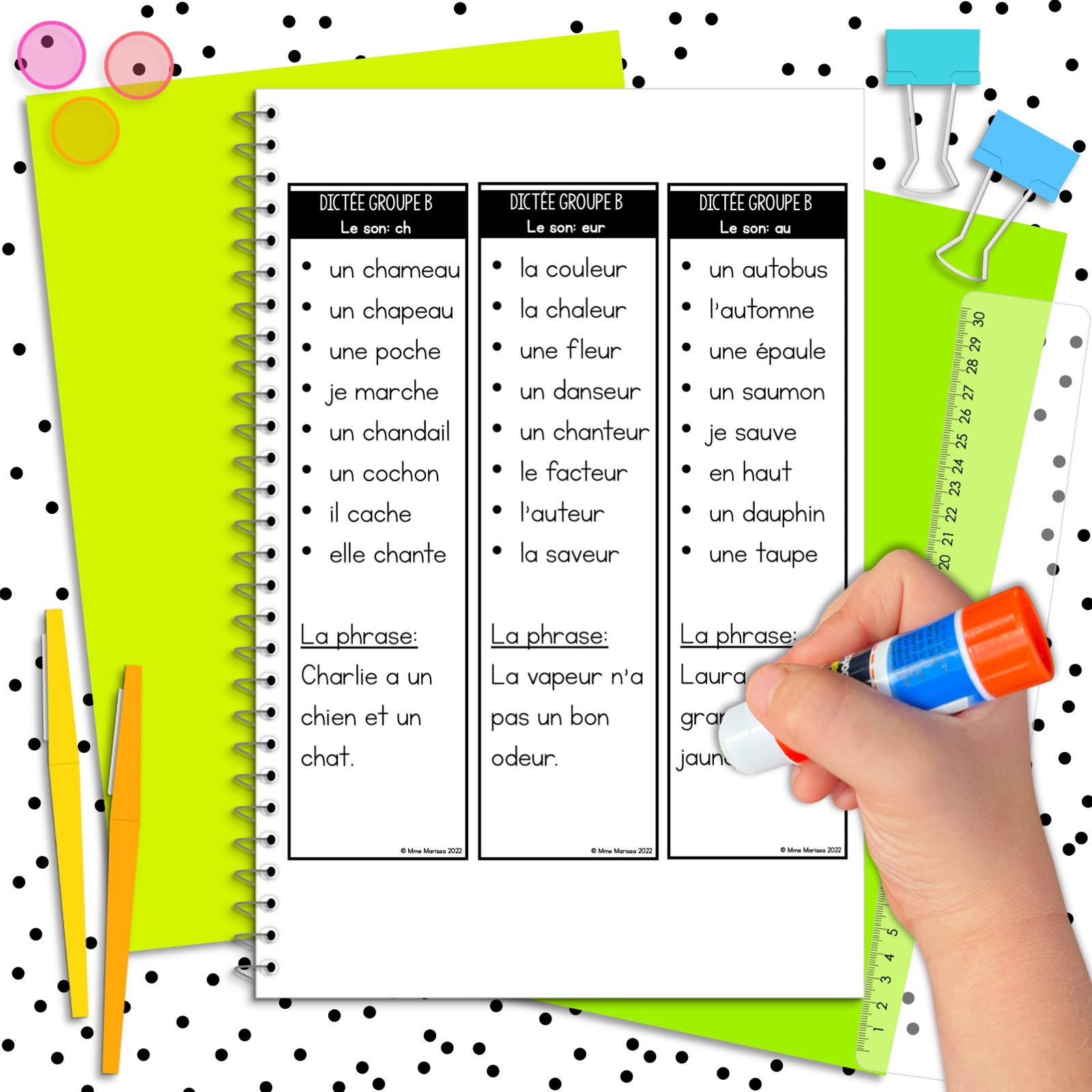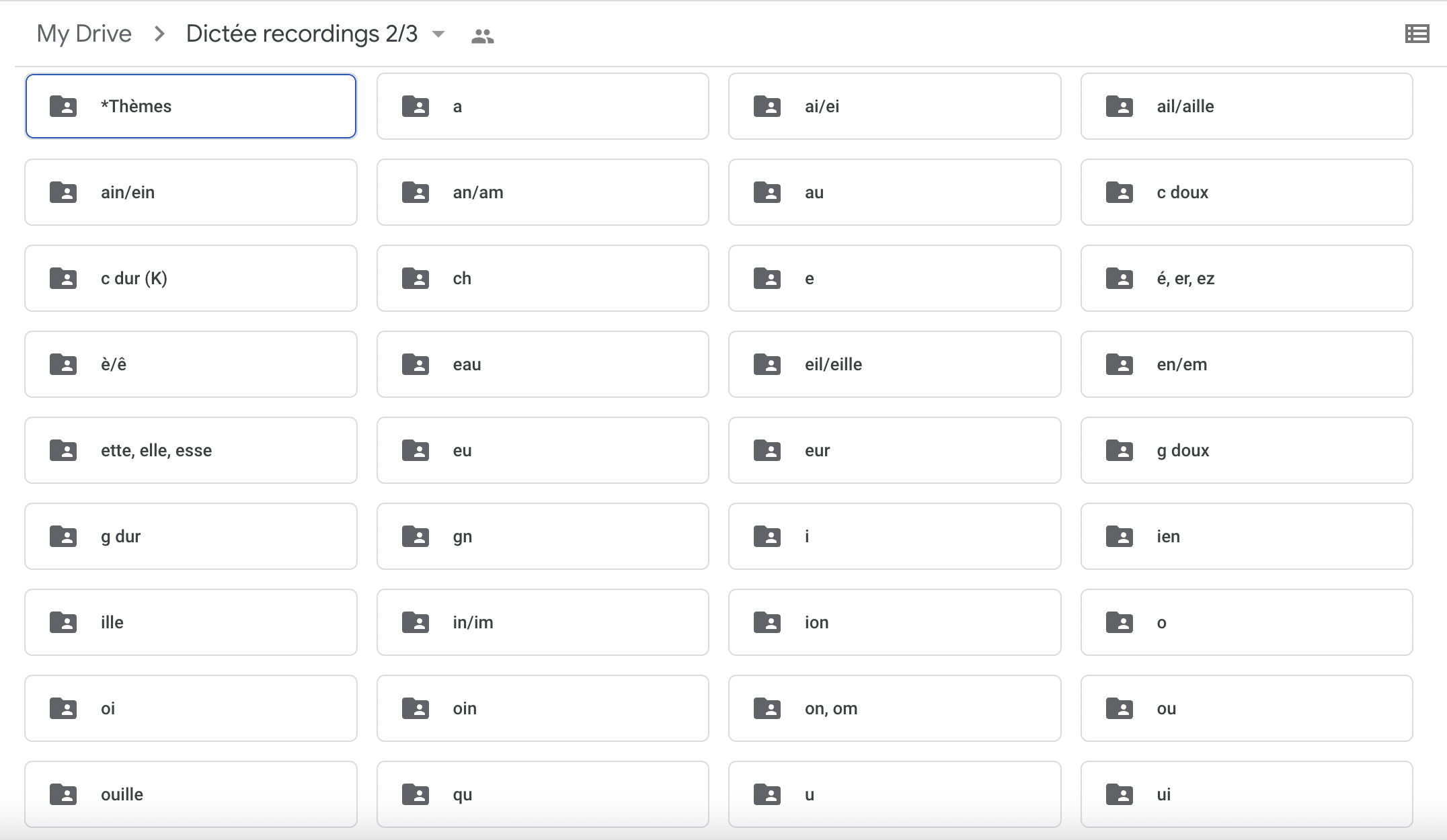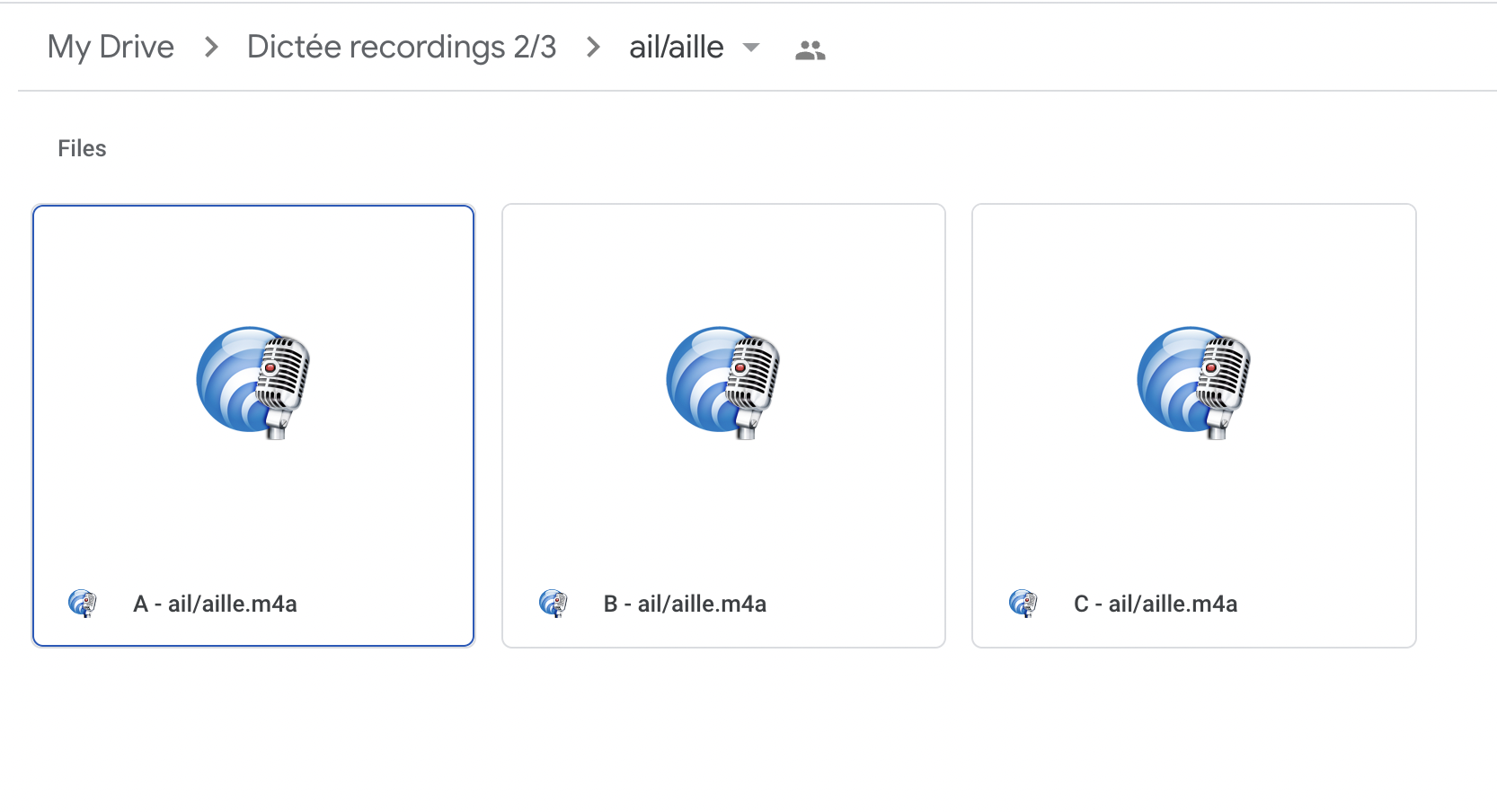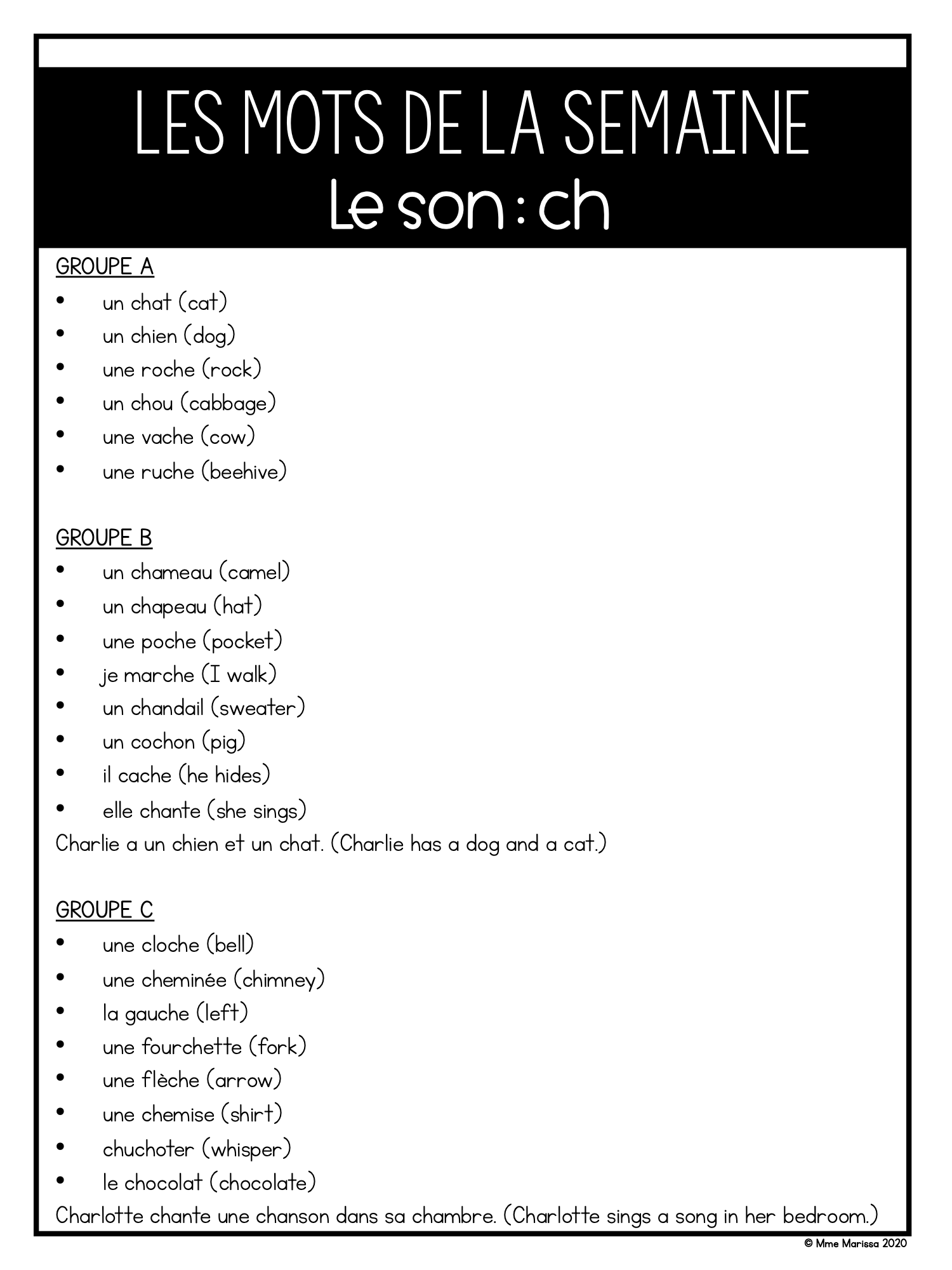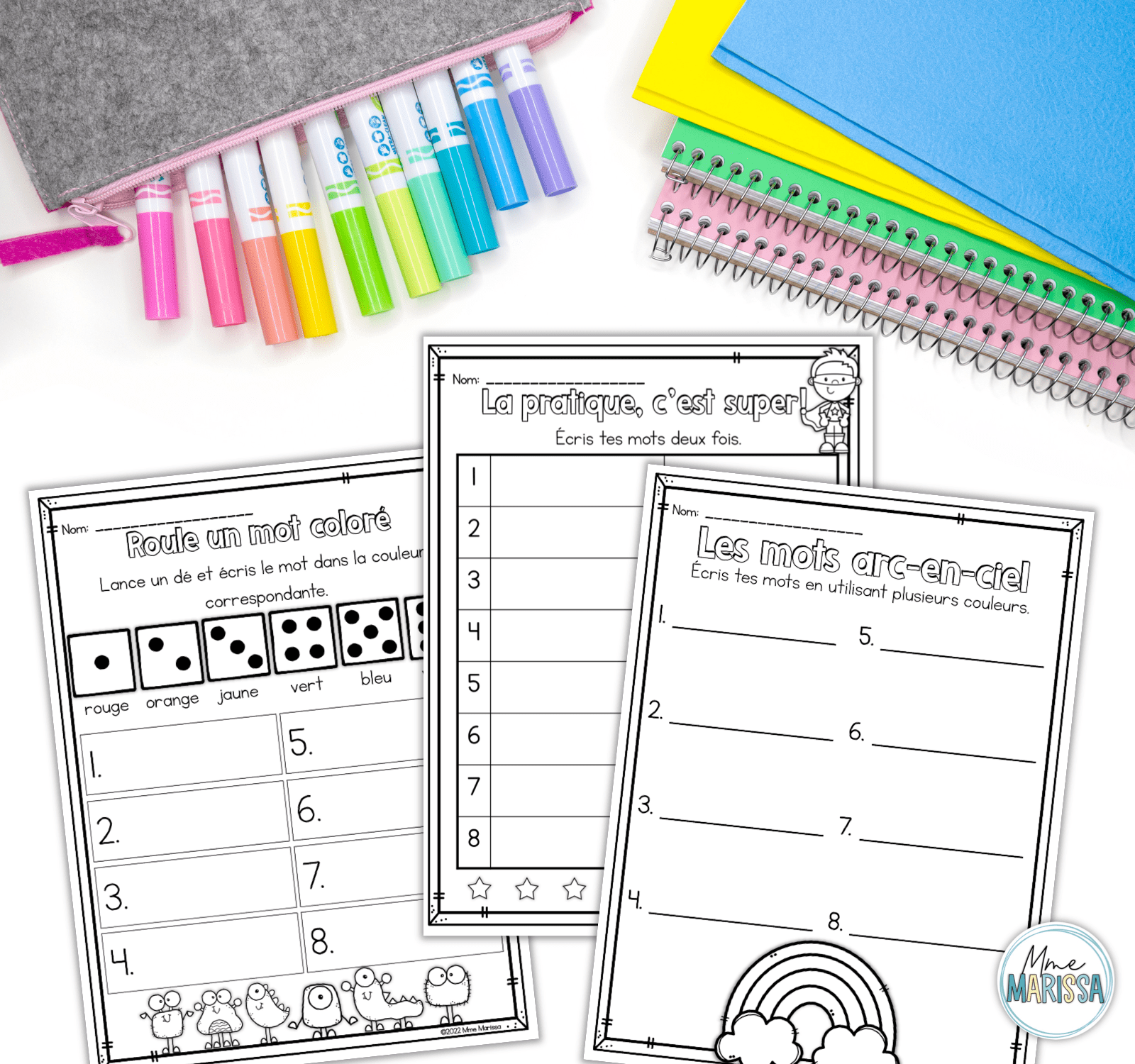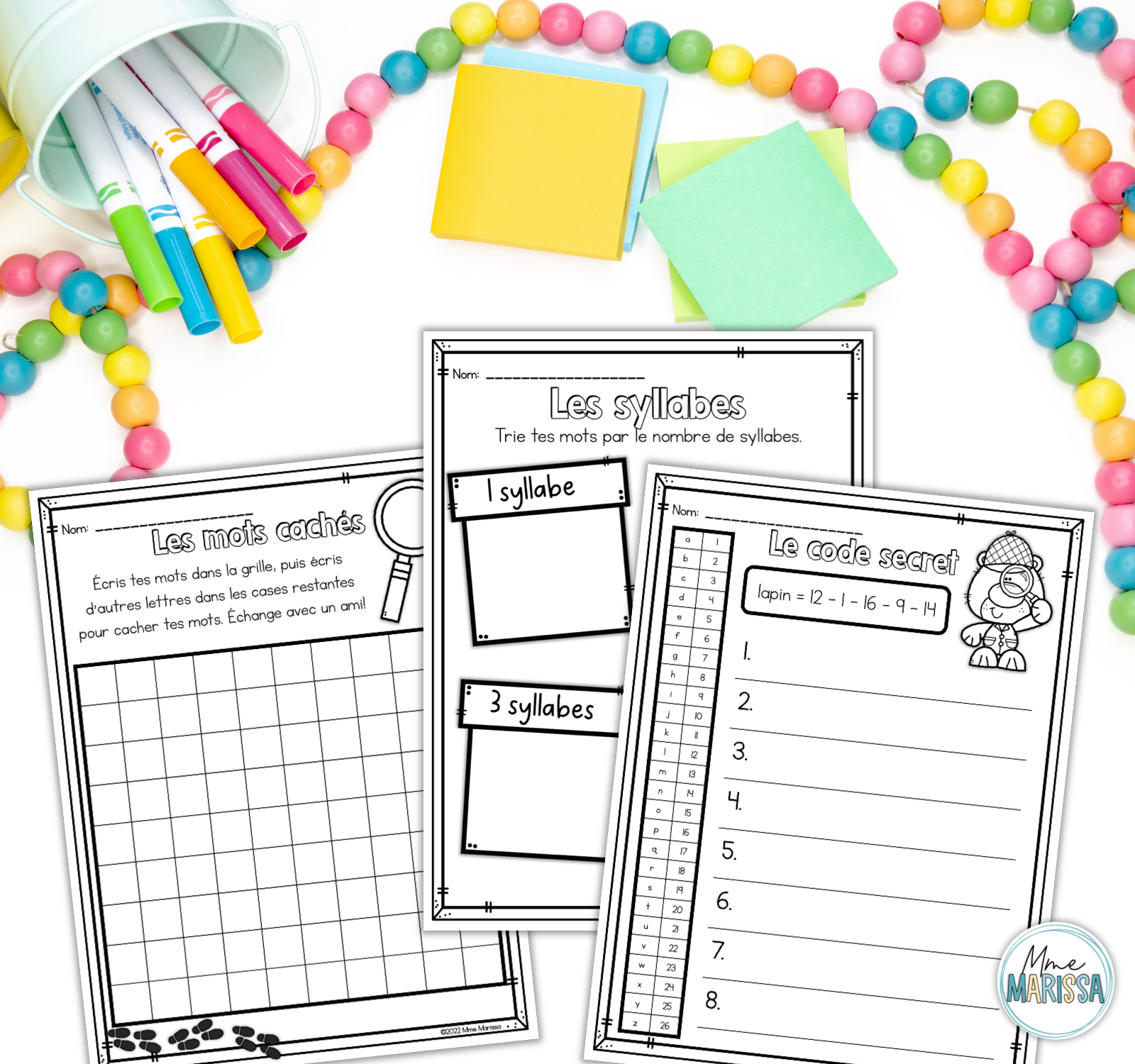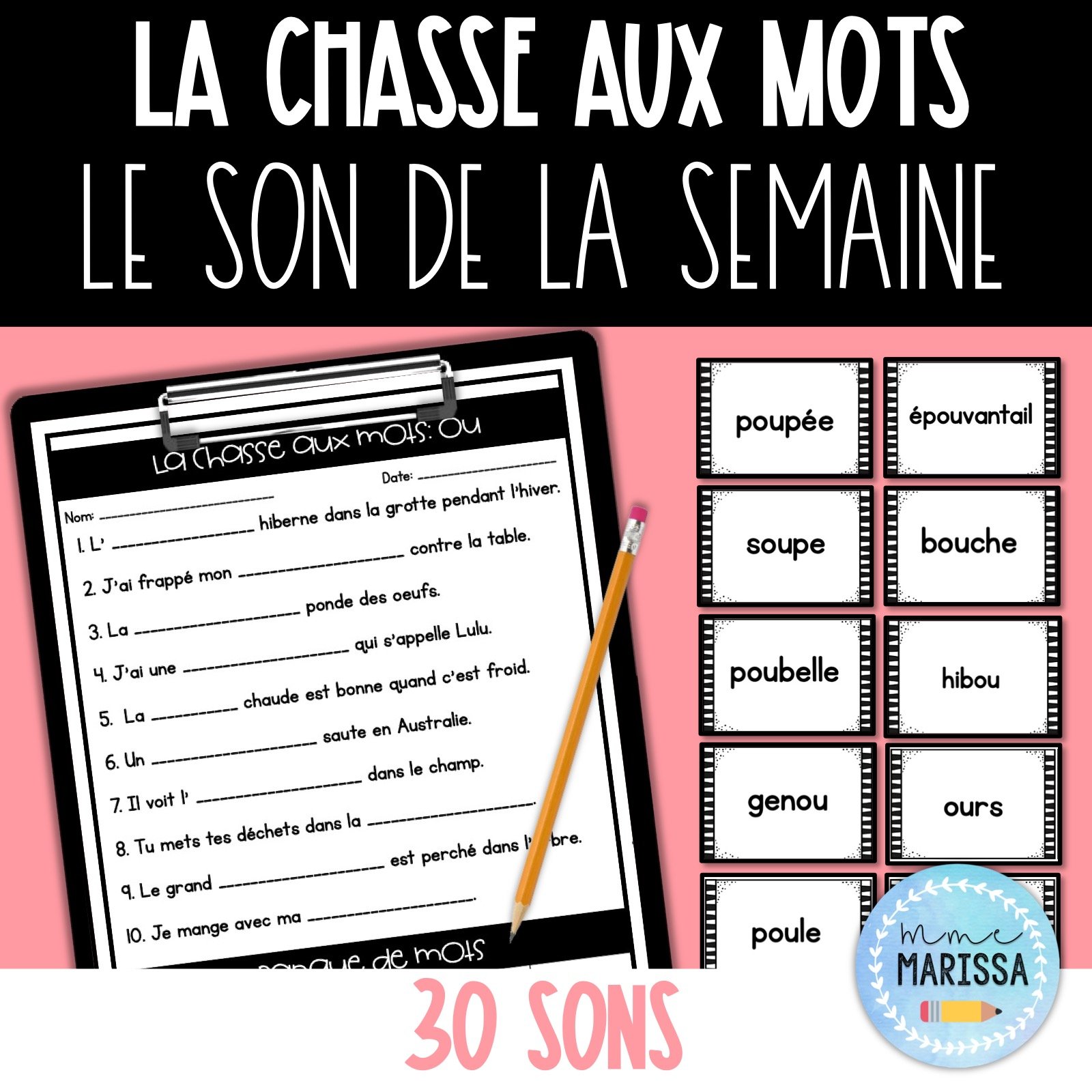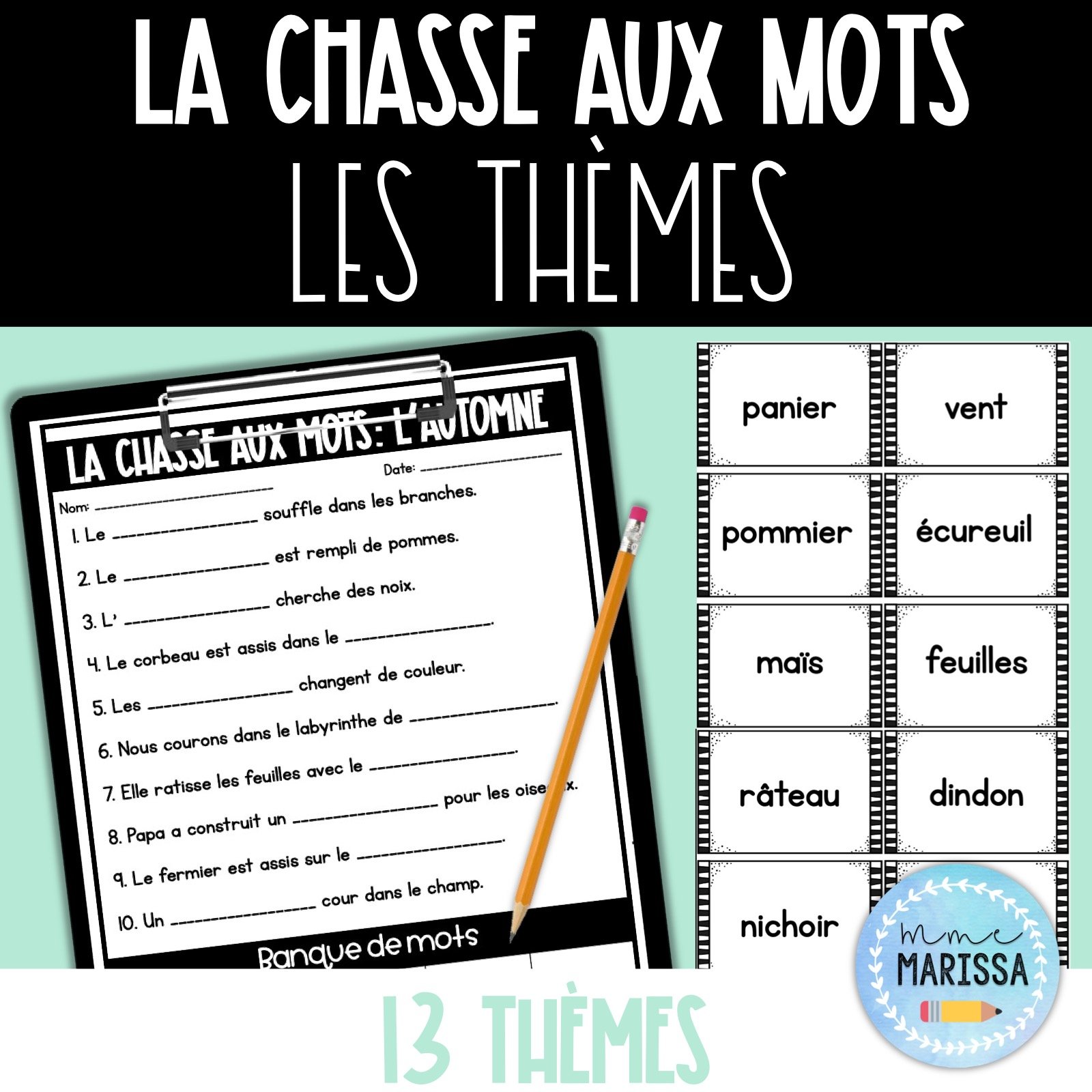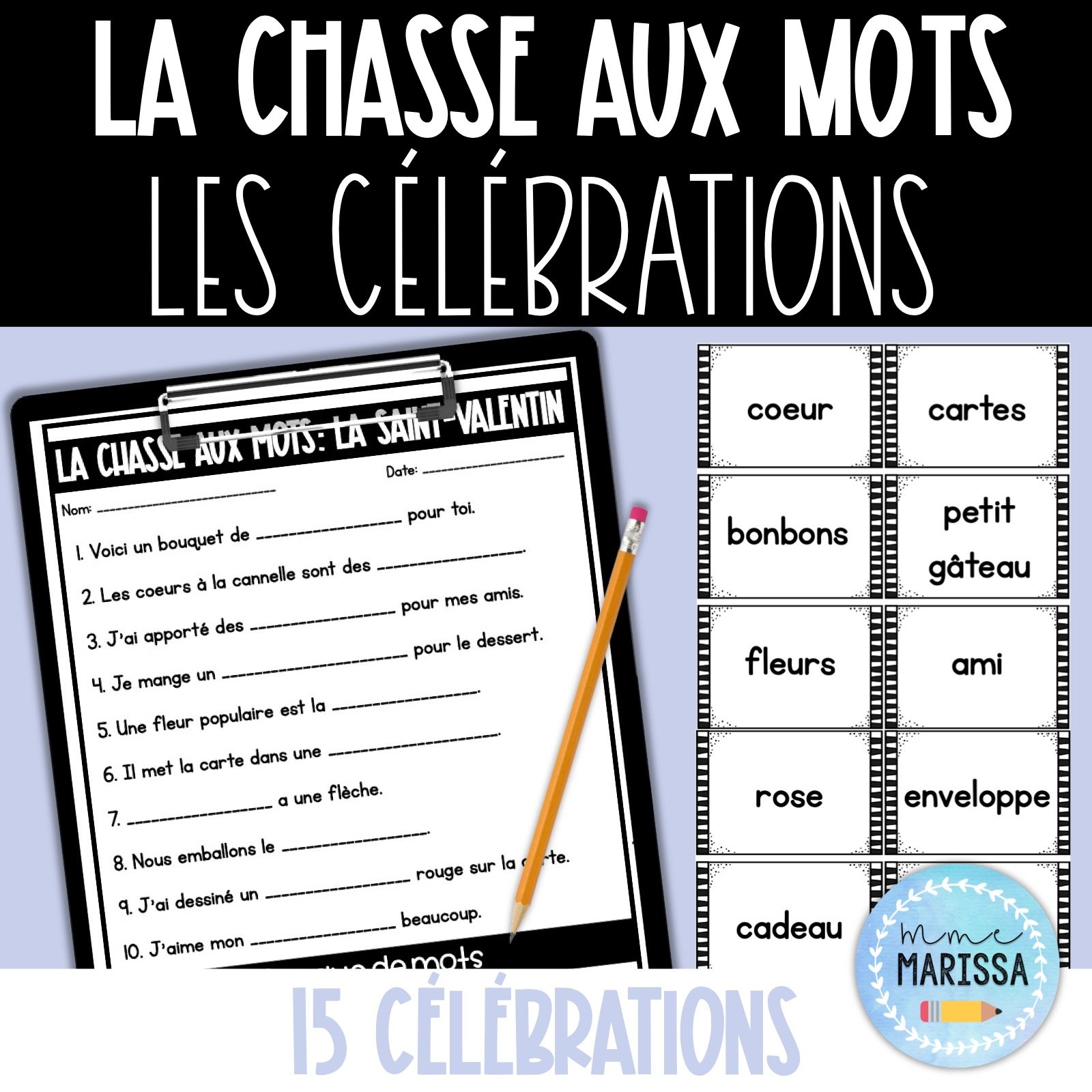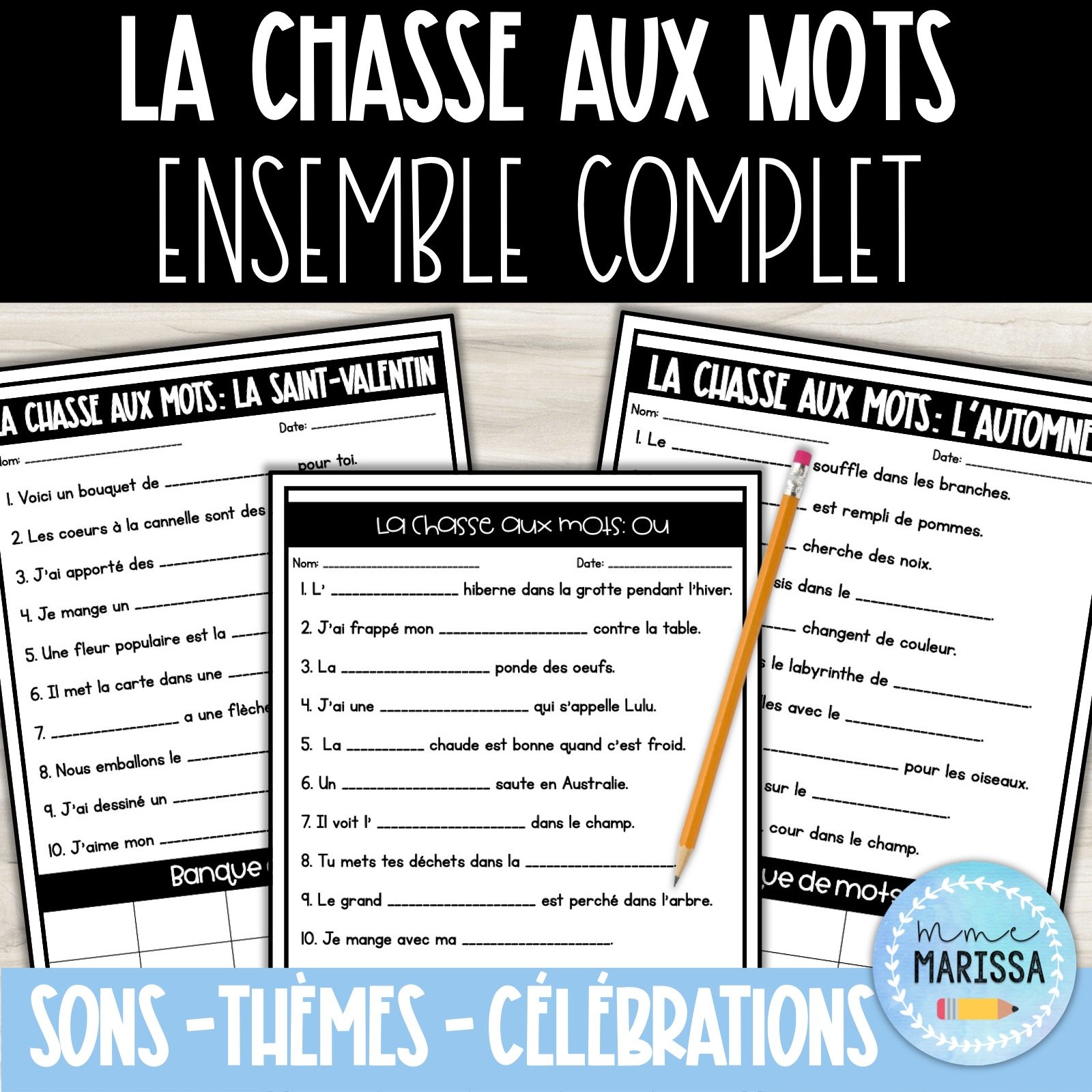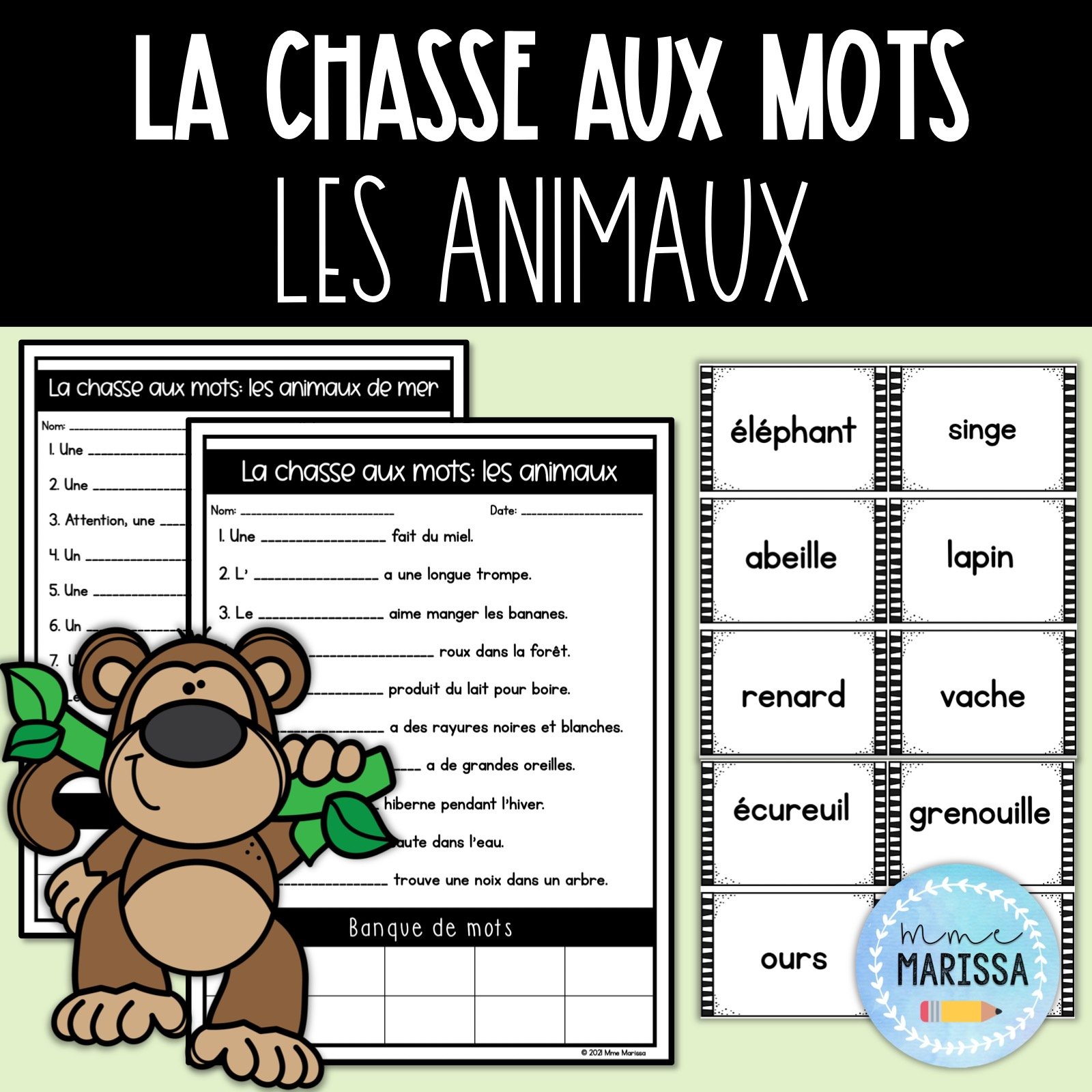My Weekly Dictée Program in 2/3
PLEASE NOTE:
Since writing this post, I no longer do dictée this traditional way. I now have no home practice and instead of a test at the end of the week we do a sound check-in. This isn’t meant to trick them and I don’t tell them which words are on it. The words I choose are all ones that we practiced during various activities throughout the week featuring our target sound. This quiz is meant to show me if they understood and can apply the lessons we learned.
Below is how I USED TO do dictée which is the traditional spelling test style. It is up to you to decide how you’d like to do proceed based on your style and preferences.
Should you decide to switch to the check-in style, you can still use the resources. You can still have groups. You just don’t send it home for them to memorize. Use the word lists to differentiate activities that students practice. Even the lists can be used to do different check-in quizzes. Lots of ways to use the same thing in a different way!
**I will be writing a new post about how I do my check-in but until then, below is how I ran a traditional spelling system if you prefer that way.
No stress!
Yes, there is a weekly test but I honestly do not attach much weight to it. It’s there to keep them accountable, but if they bomb one because they had a bad week or didn’t practice, it is not the end of the world. Doing amazing or poorly on dictée doesn’t really affect how I assess you in language. It just gives me an idea of how you’re doing.
If a student is away on a Friday, they do not need to make up the test.
What’s it based on?
Sounds! I hammer sounds pretty hard in my primary classroom because they have to have a good understanding of sounds to be able to read and write efficiently. One of the ways we work on sounds is through our sound of the week dictées. Each week we focus on a sound like ou, ail etc. Check out my FREE French sounds resource.
I also like to do thematic dictée about once a month that’s related to a season or holiday. My students like these ones best!
What order do they go in?
Well, there are no numbers attached to each dictée sound for a reason. Each teacher teaches sounds in a different order so who am I to tell you what to do? But…generally I start with the simpler 1-2 letter sounds first, then move into 3 and then 4. So ch definitely comes before ouille!
How is it structured?
I have 3 groups: Groupe A, Groupe B, Groupe C.
A is the easiest, B is the middle and C is the hardest.
A has the least amount of letters per word and are often decodable, without tricky silent or double letters. In B, we get a bit harder and C has the most challenge. A has 6 words. B and C have 8 words and 1 sentence.
At the beginning of the year I tend to have more students in A and B, and by the end of the year, most are in B and C. If that doesn’t happen for you, no problem! Leave your students in the group that they should be in. There is no pressure to advance all the way to C.
TEACHER SHEET
This has all of my groups on one page. This is the one that I read off of when I do tests
Below are the student sheets. You’ll notice that there are no numbers. That’s because on test day, I mix them up! So I don’t want students to attach a word to an order it goes in on the page.
Below are the student word strips. You can send these home or glue them into a notebook in class that you use for practice.
When do I start dictée and how do I decide which group you’re in?
I start by around week 3/4. The first week or two just have so much going on already and there is teaching around how dictée will work that I need to do. Plus, I need time to figure out which group I will put students in. I get a general sense of a student’s skills through their reading and writing the first couple weeks. I doesn’t matter which grade they are in, not all grade 2s are in one group. I place everyone based on their own level so that they can succeed, I don’t want to trick them here.
I tell families that the first week or two of dictée is a bit of a trial run and the group I put them in is just a guess, and it may change. Luckily I’ve been fairly accurate in the past and don’t have to switch many but if they do go up or down, it’s no biggie. I also move them around throughout the year. Need more challenge? Up to the next level you go! It’s very fluid.
Supporting practice at home
Most of the adults in my class don’t speak French and this means practicing dictée can be challenging. I’ve been told so many times: “When I try to say it at home, my child always complains that it’s now how Madame says it.”
So, students bring home their list in their agenda on Monday. The problem is, agenda’s get misplaced, student are absent. So I also post the list in my parent site. Technically they get the list on Mondays at school, but I actually post it for families on Friday afternoon (the same Friday we just did the last test on) because I have been asked in the past to provide it early for some families. There is no expectation to practice over the weekend but for some families, this may allow them time if their week nights are busy. It’s a head start IF they want it.
I use Class Dojo (but you could email or use another platform) so I post the words with translations for all three groups (the adult and the child know their group, so they can find the words they need) AND I give them voice recordings. Oh yes, I sat in my classroom and made voice recordings of every list for every sound. I saved them to my Google Drive so along with the PDF of the lists, they get a link so that week’s recordings. This way the adult doesn’t even need to be involved to practice. Or, they can open the link for their child and have me say the words for them.
I have a “Dictée recordings” folder that contains a folder for each sound. Inside each sound folder are three audio files, one for each group.
I made the recordings on my phone’s voice note app. Then, uploaded the files to my drive. Yes, it took a while but I just did it each week for a year and now they’re all there.
HOME SHEET
This is what I give to families because it has what each word means beside it. This helps A LOT!
It has all groups on one page, but they just need to look at the one their child is in.
Weekly schedule
*Students are highly encouraged to practice their words at home, but I cannot control that, so this is what we do in class. I change up the activities we do with the words throughout the year but here’s an example.
Monday - students get words and write them in their agenda
Tuesday - morning work is using orthographic mapping to practice your words (ortho mapping info here)
Wednesday - choose ___# of words and write sentences with them on your whiteboard. Some are speedy and can write 8 sentences for their 8 words, but others can’t, so they maybe get 3 written. That’s alright as long as they’re focused.
Thursday - put your words in alphabetical order OR write them twice on your white board
Friday - test (below are the test sheets. They’re half a page each, so I just copy and cut them)
Dictée morning work set up:
I set out the morning work on my rainbow table. This is a day that their task was orthographic mapping so they have their dictée notebook, get a mapping sheet and a dry erase marker. They then take their work back to their seat to get started.
Other examples:
On Mondays (new words) I put the notebooks, the word strips and glue sticks on the table.
On Thursdays (alphabetical order) I put the notebooks and some alphabetical order cheat sheets on the table.
Giving a test to 3 groups at once?! How does it work?
Students sit at their seats with their test sheet. They write their name and the sound of the week at the top. Dictée is silent, because I want everyone to have a fair shot at hearing me clearly. This takes about 20 minutes depending how much repeating I have to do or if we’re having trouble keeping quiet.
I start with groupe A, and I’ll say: “Groupe A, numéro un. Un lion” and I repeat 2-3 times.
Then I go to groupe B, and I’ll say": “Groupe B, numéro un. Un ballon” and I repeat 2-3 times.
I continue for groupe C.
Then, I give each group their second word. While they await their next word, they can doodle on the back of their sheet. Groupe A will run out of words first, so they do the most doodling. I’ve never had this be a problem to have to wait a minute between words.
Marking
Some people mark but don’t write a number or don’t even write a check or X, just circle or correct mistakes. If you want to give a total, my A is out of 6 and B/C is out of 10 (they get up to 2 points for the sentence).
They always get a sticker, even if they didn’t get any correct. Why? Because they had the courage to try!
I don’t require them to take it home and get it signed, like I said, this is not meant to be a big pressure type situation so, take it home and show your adult if you want, or don’t, nothing I can do about it.
Want it all done for you?
These are meant for 2/3 level and include everything you need to run your weekly dictée program, or to do them thematically.
Need some practice activities? I’ve got you covered!
These activities can be used with any list so there’s no need to remember to print certain activities for specific lists. They can be used as morning work, for literacy centres, in small groups or as homework.
If you do dictée practice as morning work, you’re good to go. Just print and go, no additional prep needed. It includes versions for 6, 8, and 10 word lists so that students can be working on the same activity, even if they’re on a different list.
Don’t want to constantly be printing out pages every week? Many of these activities can be used in dry erase pouches with a dry erase marker. Not all will be ideal, such as those that need colours, but many can be used over and over again without paper waste.
Extra practice
The dictée also pairs with my “Chasse aux mots” which are like a write the room, but kicked up a notch and practice the vocabulary in context. They are available in sounds, themes and celebrations. There is even a free one with animals to give you an idea of what it’s like!









